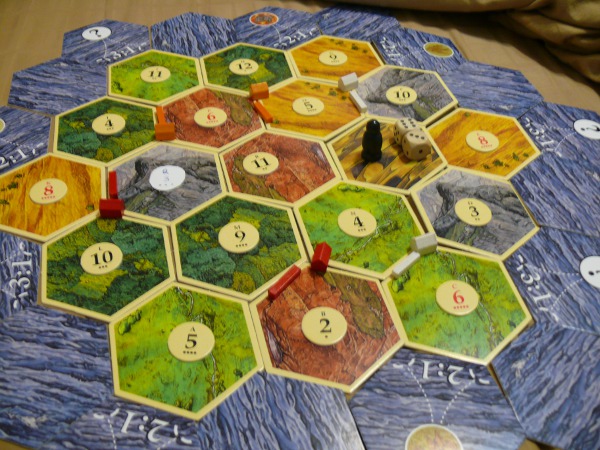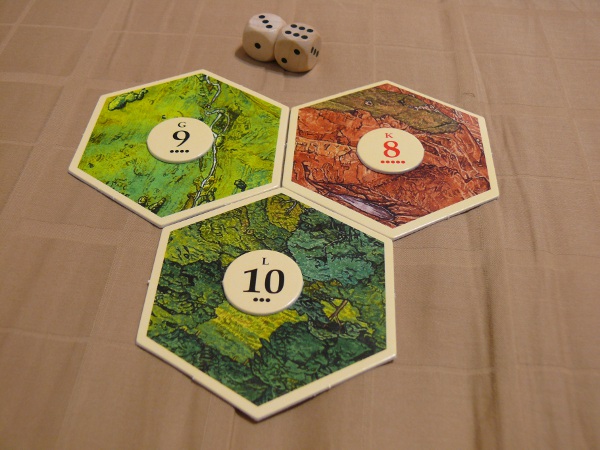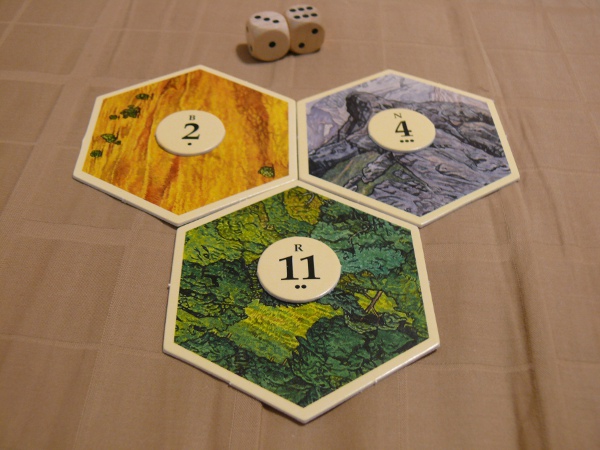This past week I was looking for a way to introduce probability to my 9th grade students. One of the problems students have when they are first learning probability is developing some intuition about what to expect.
I decided that one of the best ways to develop intuition about probability is to have some strong emotions associated with the results of their initial probability experiments, so I decided to teach my 9th grade students how to play Settlers of Catan. I didn’t give them any information about best strategies to play the game, I just taught them the basic rules and set them loose. Here are some rules for your reference.

The basic idea is, each hexagon produces resources, but only when the number shown on the hexagon is rolled as the total of 2 six-sided dice. If you have a settlement located at one of the vertexes of a hexagon which has just produced resources, you gain 1 of those resources. You can then save up these resources, trade them with other players, or then use them to buy more settlements, cities, etc… Essentially if you gain enough resources of the right type before your opponent, and you win.
The actual system we used to play is called JSettlers, and it is an open source Settlers of Catan server. I hosted it on my laptop with no difficulty and shared the link to my students to play it. This way I didn’t have to pay for a class set of expensive Settlers of Catan games.
It only took about 10 or 15 minutes of playing for the kids to realize when they had made poor choices, or when someone had an obvious advantage. The question I had once we had played for enough time that they had gathered some data (I required them to keep track of what was rolled as they played), which starting settlements were poorly placed, and which were in the best locations. Students looked at the following situation and decided that this intersection of hexagons was a good place to put a settlement.

They looked at an intersection like the following and decided that this was a poor place to put a settlement.

I asked them why they liked the first spot and didn’t like the second? One of them said it perfectly, "well, the numbers 8,9, and 10 are WAY more likely to come up than 2, 4, and 11."
We followed with a discussion of why each number was not equally likely to come up using a typically sample space table, and then we kept playing, having both put some context on the probability we were learning, and developing some intuition about which numbers were more likely to come up. I was able to extend their thinking quite a bit, as there were several different games being played, none of which had exactly the same set of numbers rolled. It really worked well, and I’ll continue to use an example like this in my practice.